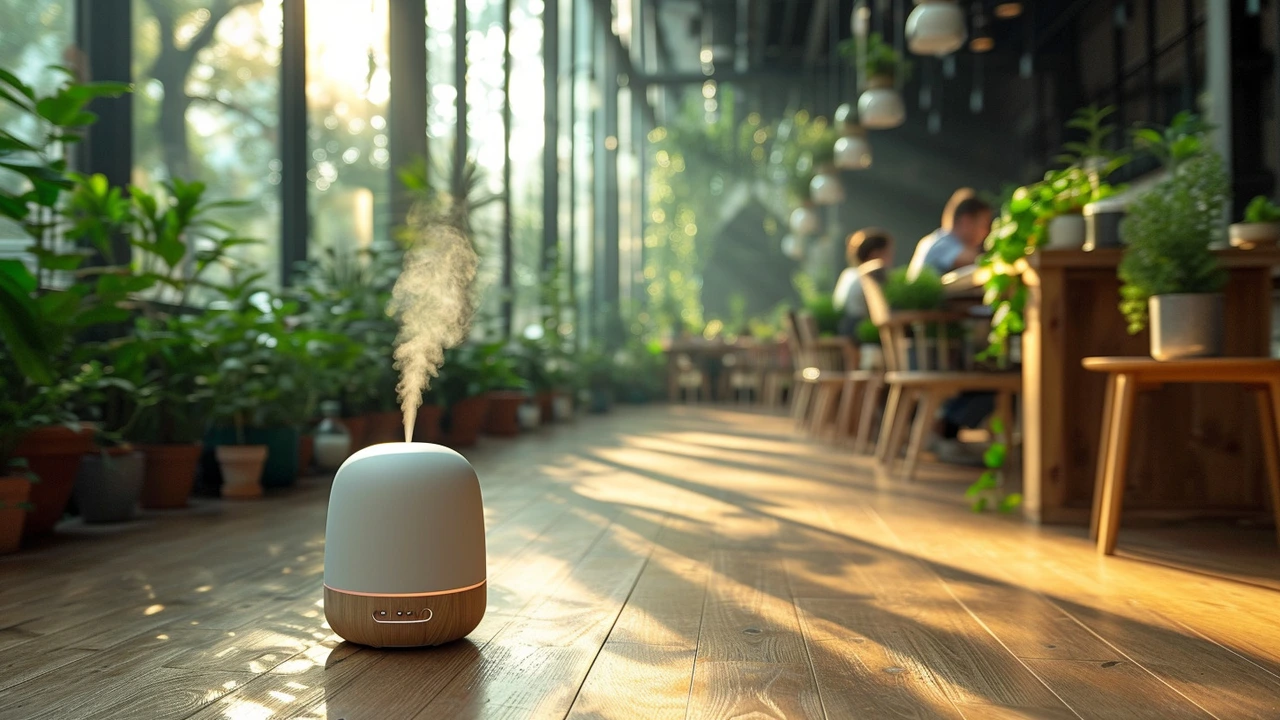
Unlocking the Mysteries of Aromatherapy
If you've followed me for a while, you know I'm a big fan of natural alternatives for managing pain. Not to replace traditional medicine, but to complement it. Today we're diving deep into the fascinating world of aromatherapy, a practice shrouded in equal parts mystery and enchantment. And let me tell you, it's not all about lovely lavender fields or romantic rose gardens. It's much more than olfactory pleasure; it's a potential lifesaver for chronic pain sufferers.
As someone hailing from wellbeing-focused New Zealand and grappling with my fair share of mommy-woes (Hello Mabel, my little whirlwind!), I've taken a shine to aromatherapy. There is this inexplicable sense of calm and happiness that wafts in with these scents that gets me every single time. But again, it's not just about feeling sniff-happy or home-proud. It's about delivering serious therapeutic benefits.
Demystifying the Science behind Aromatherapy
Did you know that fragrance is considered an ancient language that helps us communicate with our deepest inner selves? A language that our bodies instinctively understand? Moments of aromatic bliss can significantly reduce pain, promote sleep, and alleviate anxiety. But how does it do this, you ask? Well, it's a stunning dance between our sense of smell and our brain.
When you take a whiff of an essential oil, it doesn't just stop there. The olfactory nerve picks up these particles and zips them off to the limbic system – the part of our brain responsible for memory, emotion, and various physiological functions. This, ladies and gentlemen, is why your grandma's cinnamon rolls or a summer rain sends a cascade of memories and emotions flooding through you. It's all deeply entwined with our primal instincts and survival mechanisms. Clearly, aromatherapy is not for the faint-hearted (pun intended).
How Aromatherapy Fits into Pain Management
A shifting consciousness worldwide recognizes aromatherapy as a great tool for pain management. Got a pounding headache? Dab some peppermint oil onto your temples. Struggling with arthritis? Massage some ginger oil into your joints.
By leveraging essential oils, aromatherapy invokes our body's own self-healing mechanism. When the right aroma molecules interact with our olfactory receptors, they can trigger a series of reactions that influence areas associated with pain and stress perception. The soothing signals sent to our brain can help reduce the sensation of pain and promote relaxation. And as someone juggling the demands of motherhood, work, and life (not to mention a sizeable laundry mountain), I can vouch for this soothing influence.
Choosing Your Essential Oils
Having established the "why," let's move onto the "what." There's a bewildering array of essential oils out there, each promising benefits to whisk away your woes. From stress-busters like lavender and chamomile to invigorating oils like peppermint and eucalyptus, the choices are, quite honestly, overwhelming. As a pro-tip, start with the pain type targeting oils, such as lavender for headaches, evening primrose for nerve pain, or chamomile for general aches.
You want to choose the highest quality oils, 100% pure and natural, pesticide-free, and where possible, organic. I usually prefer respected, established brands, but remember the price isn't always an indicator of quality. Research, read reviews, and make informed decisions. Just like you, dearies, the world of oils deserves some love and exploration.
Practicing Safe Aromatherapy
Before you go on an oil-binge, it's important to approach aromatherapy responsibly. Essential oils are potent and need to be used wisely. If used undiluted, they may cause skin irritation or allergic reactions. Hence, always dilute them with a carrier oil (like almond or jojoba oil) before applying topically.
Also, while essential oils have many benefits, they are not a substitute for medical treatment. If you're experiencing chronic pain, it's crucial to consult your healthcare provider before integrating aromatherapy into your routine. Meanwhile, keep in mind; aromatherapy should never replace any ongoing treatments or medications. Consider it a bonus, a little burst of nature’s magic to lighten your load.
Incorporating Aromatherapy into Your Daily Life
Now, how can we make these aroma-blessed moments a part of our daily life? Simple! Make diffuser blends, create massage oil concoctions, dabble them on pillowcases, or mix them into bathwater. And let's not forget the good old fashioned way of inhaling the fragrance directly.
If you're feeling bold, a DIY aromatherapy roll-on could be a fun weekend project that will also make for personalized gifts. Mabel, my little one, enjoys our DIY days just as much - grinning cheekily, happily making cute labels for mommy’s "magic potions". That little assistance, that family connection, makes the therapy even more meaningful.
With aromatherapy, the possibilities are as boundless as your imagination. And the joy you derive from these sensory pleasures is part of the therapeutic process. The magic doesn't just lie in the essential oils; it's also in the happiness you get from pampering yourself, finding calm amid chaos, and celebrating life one sniff at a time.
Through aromatherapy, we're tapping into a new realm of pain management. The journey is aromatic indeed, with promises of relief, relaxation, and a renewed love for nature's cornucopia of scents. Pain be gone, one aroma at a time. Let us journey together into this world of fragrant healing. I promise; it'll be an adventure to remember.





Write a comment